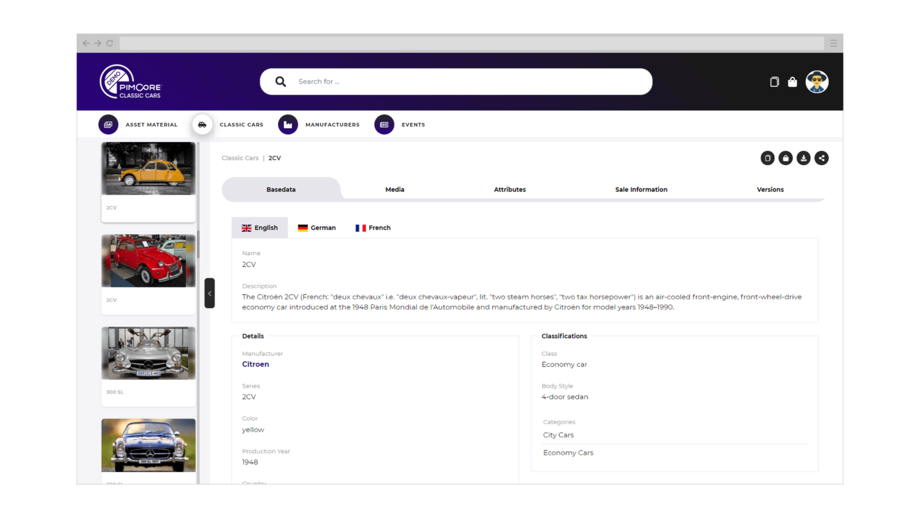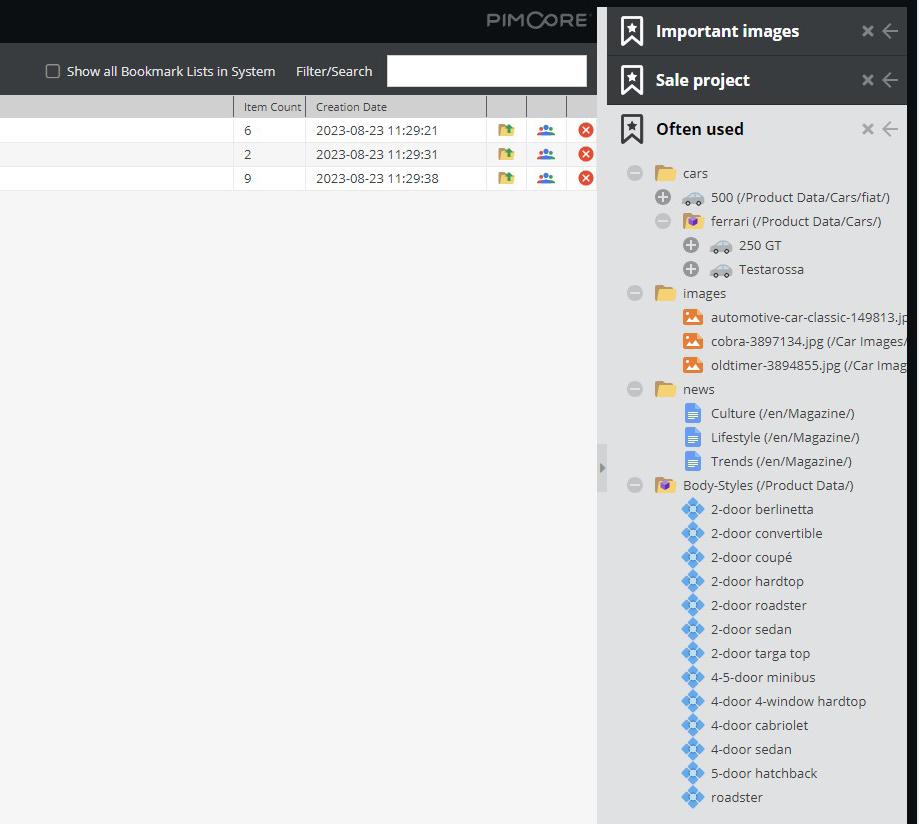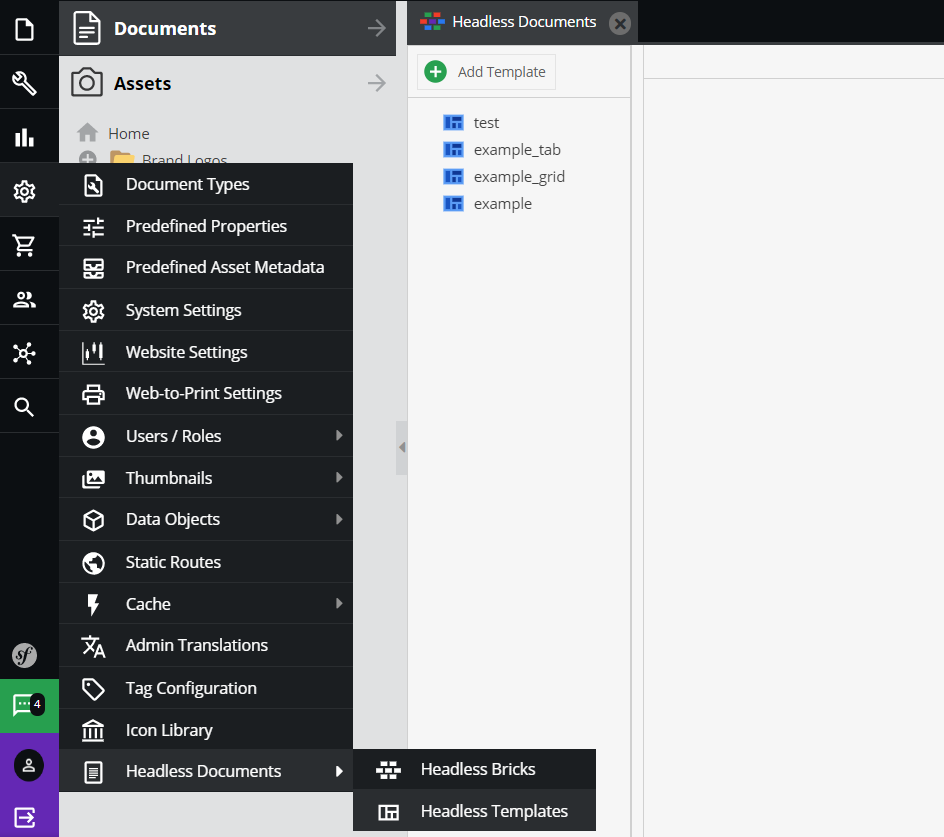The Pimcore Enterprise Edition is a comprehensive and flexible solution designed for large organizations and enterprises. It offers advanced enterprise features and top-level technical support. With full customization capabilities, this edition enables integration with existing systems and management within a selected infrastructure, ensuring complete control and security. Focused on scalability and performance, Pimcore Enterprise Edition is the ideal choice for organizations with complex needs seeking to optimize their resources and processes.
What makes the Enterprise version different?
PCL license model
Protecting the source code of a solution or application based on Pimcore is a priority here. There is no longer any need to worry about the terms of the open-source GPLv3 license.
Pimcore enterprise modules
Access to all Pimcore Enterprise extensions, such as Experience Portals, Datahub Export, REST API, Quality Management, and many others.
Access to LTS and SLA contracts
Reducing the total cost of ownership (TCO) and increasing return on investment (ROI) is possible thanks to access to security patches and compatibility features with legacy systems.
Pimcore Secured
Pre-configured, robust security mechanisms, proactive security patching, comprehensive security analytics, and state-of-the-art open-source security management (Q1/2024).
Pimcore Experts
Unlocking the full potential of the Pimcore platform becomes achievable through optional consultations with experts, in-depth strategic analyses, industry best practices, and comprehensive training.
License cost
The Enterprise license allows installation on one server, and its purchase cost starts at 2,100 EURO per month. The special Unlimited version allows installation on an unlimited number of servers.
Pimcore Enterprise Extension
Pimcore Copilot
Pimcore Copilot revolutionizes data and process management within the platform. This advanced AI assistant offers contextual actions, adapting to the user’s current tasks, whether they are working with data objects, digital assets, or analytics.
Copilot AI enables high customization – both developers and business users can easily adjust and extend its features to meet their unique needs. A key element of Copilot AI is the Job Execution Engine, which allows precise management of complex processes. Users can monitor task progress in real-time, pause, cancel, or repeat tasks, ensuring smooth project execution. This new Pimcore functionality significantly increases productivity, automates routine tasks, and supports decision-making, ushering in a new era of intelligent data and business process management.
Pimcore Copilot | A New Era of Business Intelligence
Copilot | Pimcore Development Documentation
DataHub File Export
DataHub in Pimcore enables automatic publication of data to files in CSV, XML, or JSON formats. It is an efficient solution for regular data exports. Configuration is done via the intuitive “drag & drop” function, which allows the user to define the schema and format for presenting data. Users can save files in various locations, including local directories, via SFTP, or using HTTP POST. Additionally, the system offers data caching functionality, which significantly improves the export process’s performance.
Datahub REST API
DataHub has been extended with a dedicated REST API endpoint that operates in read-only mode. This endpoint supports both data objects and assets. Data configuration is comprehensive and handled through Elasticsearch, enhancing query performance and system scalability. This solution enables the integration of Pimcore with various IT systems and frontend applications. The features include the configuration of the schema and data presentation format, similar to other DataHub adapters. Data is indexed and delivered from Elasticsearch indices, eliminating additional database load. Documentation and testing of the endpoint are possible using the Swagger UI tool. Three types of endpoints are available: “tree-items,” which loads all elements from a single tree level; “search,” which searches and returns items of various types without folder structures; and “get-element,” which allows retrieval of a single item based on its type and identifier. Endpoint security is ensured through a “bearer” token that must be included as a header in each request.
Enterprise Webhooks
The extension to DataHub introduces Webhook functionality for assets, documents, data objects, and workflow processes, enabling external clients to subscribe to events occurring in Pimcore.
With full configurability of requests to subscribed endpoints, this solution provides complete control over the information being shared. It can be used to connect Pimcore with other systems based on events. Requests can be sent to configured subscribers for various types of events, such as creation, update, or deletion of items, as well as the start and end of workflow processes.
The content sent to subscribers can be finely configured, including defining included item types and subtypes, as well as the scope of data. For assets, binary data such as videos or images can be included. Event dispatching can be restricted to configured work areas, further enhancing control over the process.
Experience Portals
The Pimcore Portal Engine enables the creation of unique portals for managing assets, known as Asset Experience Portals, and product management portals, i.e., Product Experience Portals, through configuration alone, eliminating the need for coding.
The offered portals come with a rich set of “out-of-the-box” features and allow for user interface personalization through configuration. Additionally, they provide options for further customization and extension using custom code. Within a single system, multiple portals can be configured for different target groups. These portals enable the visualization of data contained in objects and assets, as well as searching, filtering, and navigating through the data.
Asset management includes uploading, updating, deleting, and editing metadata. Various data formats are available for download, along with the ability to collect related data in collections or baskets, with the option to download them together in a ZIP file. These portals also allow for sharing data or data sets with other users and external stakeholders. Access control is possible based on users and roles, with the option for SSO integration via OpenID Connect. Support for multilingualism and multiple entities is also provided.
Product Experience Platform | Product Experience Portal
Enterprise DAM Metadata
This feature enables advanced configuration of asset metadata in a manner similar to object class definitions. It introduces the visualization of asset metadata, which is similar to that used for objects. Users can define the structure of metadata within class definitions, ensuring consistency and uniformity. Additionally, there is an option to assign multiple metadata class definitions to each asset, increasing flexibility and customization to meet individual needs. This feature also introduces additional data types for metadata, such as multiple selections, many-to-many relationships, computed values, and more. All these metadata are stored in the same place as standard metadata, making it easier to manage and access them.
Enterprise Metadata Management | Metadata Modeling
Enterprise Asset Metadata | Pimcore Development Documentation
Direct Edit
This feature allows local editing of Pimcore assets in a selected graphic editor and immediate upload back to the Pimcore database. The extension consists of two main components.
The first is the Pimcore Direct Edit Bundle, which must be installed in Pimcore and provides all the key server-side functionalities. These include a new button on the asset detail page that starts the local editing process, an API for the Direct Edit client to download or re-upload the asset, and a modal window with the status for tracking local file editing, such as waiting for upload or applying changes to Pimcore. The second component is the desktop client, which must be installed on each client machine and handles downloading files, opening editors, and uploading the modified versions back to Pimcore.
Workflow Designer
The Workflow Designer extension introduces a visual editor for the workflow engine. It allows the creation of one or more workflow definitions, which can be organized in a folder structure.
The visual editor enables the definition of states, transitions, and global actions. All settings can be configured directly in the user interface. Finally, there is the option to save the workflow definitions to configuration files, which simplifies management and transferring configurations.
Integration with the Workflow Automation platform
Pimcore’s integration with the Workflow Automation platform is an advanced tool that enables integration with various external systems using configurable templates. The main goal is to simplify and accelerate integration processes. These templates are particularly useful in automating and optimizing workflows, allowing for quick adaptation to specific business requirements. The first version of this solution offers templates for the n8n tool, developed based on existing Datahub configurations, which facilitates workflow management and increases operational efficiency. This tool is suitable for companies that want to automate their workflows, improving efficiency and reducing the time required to integrate with external systems.
Statistics Explorer
The offered statistical tool is a complete solution for data analysis and creating statistical reports. It can be integrated with the application, enabling users to access a wide range of analytical functions. The tool operates in two modes: the first is simple lists, while the second offers advanced statistics, including calculating indicators and pivot tables. Various types of charts are available for data visualization, which significantly aids in interpreting results. Regarding data backends, Elasticsearch indexes and MySQL tables are supported, providing flexibility in selecting data sources.
The tool includes a Statistics Loader module, which allows reports to be attached to any websites, and an Event Tracker for tracking and analyzing custom events within the system.
Tracking Events
The package includes the basics that facilitate the implementation of an event tracker in the Elasticsearch index. It supports Elasticsearch version 8.
Alternative object trees
The “Alternative Element Trees” module functionalities enable the creation of custom data object views, facilitating the identification of quality issues and accelerating maintenance tasks. This feature allows for grouping and organizing data based on technical attributes, which increases visibility and control over data structures. Users can easily create multi-level groupings, improving the efficiency and accuracy of data handling. Additionally, the intuitive interface provides simple data management, enabling easy operations such as opening, renaming, and copying from the tree view.
Optimize Data with Alternative Element Trees
Alternative Element Trees | Pimcore Development Documentation
Enterprise Data Quality Management
The Data Quality Management package offers advanced tools for monitoring and visualizing data quality. It enables the calculation of data quality scores for objects, based on personalized rules.
The data quality score can be visualized in various ways: directly on the object, in a grid view, or on the object tree. This helps identify areas that require improvement. The system also provides suggestions for improvements, which are generated based on the calculated score. As a result, users receive a concrete action plan to improve data quality.
SSO with OpenID Connect
The SSO (Single Sign-On) configuration feature in Pimcore allows users to log into the backend via OpenID Connect providers.
The user has the ability to configure one or more such providers, which enhances the flexibility and security of the login process. Optionally, the system offers the ability to hide the standard Pimcore login screen and automatically redirect the user to the default OpenID Connect provider. This solution makes the login process more automated and consistent across different platforms and applications.
Bookmark Lists
The Bookmark Lists functionality in Pimcore offers a wide range of possibilities for organizing and managing data. It allows users to create bookmark lists for various types of elements, such as assets, objects, documents, and folders. Adding new items to the list is intuitive and done via the “drag & drop” feature. Items can also be organized into custom folders that are specific to each list, enhancing the flexibility of management. The system provides visibility of child elements, which facilitates navigation and management of complex structures. Additionally, elements from the bookmark list can be moved to the destination within various Pimcore editors, also using “drag & drop”.
Headless documents
This extension introduces a new document type called “Headless Document,” which is designed for managing website data in a headless architecture. As a result, there is no need to use template files for managing unstructured data. The Headless Document is rendered exclusively in the admin interface, called the Admin UI. This rendering is based on a template configuration that can be defined in a YAML file. The extension offers the ability to use both built-in and custom editable elements, known as “editables,” in Headless documents. Additionally, for these documents, so-called “bricks” can be defined, which are also configured using YAML files. It is also worth noting that data from Headless documents can be exported via the DataHub package.
This functionality is particularly useful in the context of integration with other systems and managing data across different platforms.
Integration with Adobe/Microsoft applications
The integration of the CI-HUB service with the DataHub module in Pimcore enables direct connection of resources and data objects with Adobe and Microsoft products. This solution significantly enhances the efficiency and integration of data management.
The configuration of data schemas and presentation is carried out intuitively, similar to other DataHub adapters, using a “drag & drop” function. This simplifies the management and customization of data structures to meet individual needs. To increase performance, the system offers a data caching feature. This ensures that operations on large datasets are performed more efficiently. Connection security with CI-HUB is guaranteed by the use of a token for authorization to access the DataHub endpoint.
Web-to-Print Software | Enterprise Publishing Platform
Pimcore Connector for Adobe, Figma, Google, Microsoft, Sketch, WordPress
Interfaces to translation systems
The system allows for the creation of translation tasks and the sending of selected elements to external API interfaces for translation. After processing these tasks, they are retrieved again and update the corresponding elements in the system. Supported elements include multilingual object attributes, CMS module document content, and asset metadata. The configuration of translation services is tailored to the specific provider. Supported options include Translations.com, Xplanation (also known as LanguageWire), and DeepL. This solution makes the translation and updating of multilingual content much more automated and efficient, which is crucial for global operations and managing content in different languages.
Enterprise Translation Management System
Translation Provider Interfaces | Pimcore Development Documentation
Product data syndication
The package enables the integration of the Productsup platform with the DataHub module. This allows for the distribution of product data to various marketplaces and marketing channels.
The configuration is done in an intuitive way using the “drag & drop” function, similar to other DataHub adapters. To increase performance, the system offers a data caching feature for exported data. The package includes a URL service that allows Productsup to directly retrieve product data. Additionally, there is a URL service designed for importing order data from the Productsup platform. This solution significantly automates and streamlines the process of managing product data and orders.
Product Feed Management Software
Open-source Security Management
The core of this solution is advanced security configuration, which strengthens the Pimcore Enterprise environment from the ground up, integrating with existing infrastructure and preparing the company for future challenges. With a proactive approach to security patching, Pimcore Secured enables staying ahead of threats before they arise, not only preventing potential breaches but also emphasizing the company’s commitment to data protection and integrity. Pimcore Secured enhances the security strategy with detailed reports, providing a clear picture of the security situation and enabling informed decisions to strengthen defenses. By meeting global data protection standards, Pimcore Secured allows organizations to comply with international compliance requirements, building trust and reliability among customers and stakeholders, offering a strategic advantage and enabling the focus on business growth while maintaining innovation and strengthening customer trust.
Source materials:



















